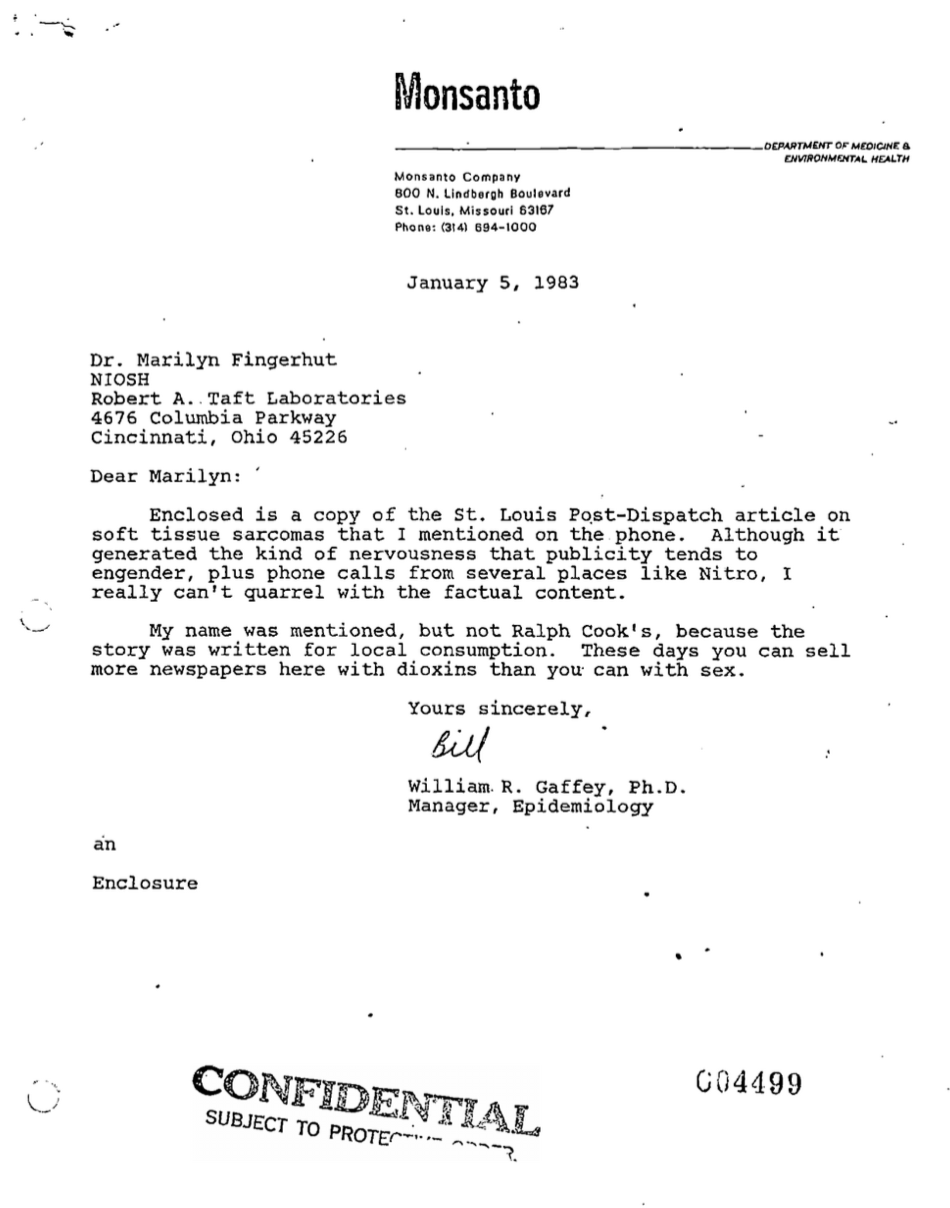Confidential History: “Agent Orange” in the U.S.
Despite increasing concerns about the effects of dioxin on occupational health in the late twentieth-century, industry scientists continued to downplay the toxicity of the chemical.

The document highlighted is a confidential letter on dioxin written by the managing epidemiologist William Gaffey at Monsanto's Department of Medicine & Environmental Health in 1983. The letter comments on an article published by the St. Louis Post-Dispatch on rare cancers studied by dioxin investigators. The article outlines how researchers studied the cause of deaths of workers from the chemical companies Dow and Monsanto. Workers at both Dow and Monsanto had been exposed to dioxin while manufacturing the herbicide 2,4,5-T (also known as "Agent Orange") and other substances. Though the researchers found that workers exposed to dioxin had higher rates of soft-tissue cancer than rates of soft-tissue cancer in the general public, industry scientists like Gaffey continued to publicly discount the credibility of the research.
In response to the article’s increasing concern about occupational hazards, Gaffey wrote in his letter: “These days you can sell more newspapers here with dioxins than you can with sex.”
This sentence points to the rise in awareness about the negative effects of dioxin on occupational health, as well as industry scientist’s willingness to make light of this darkening reality.
Check out the file here!
